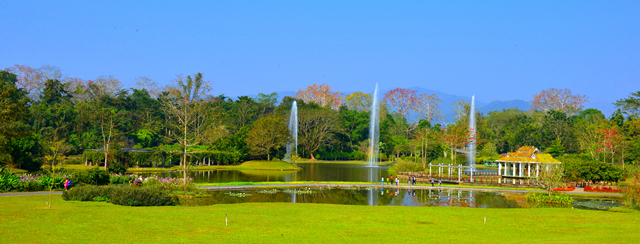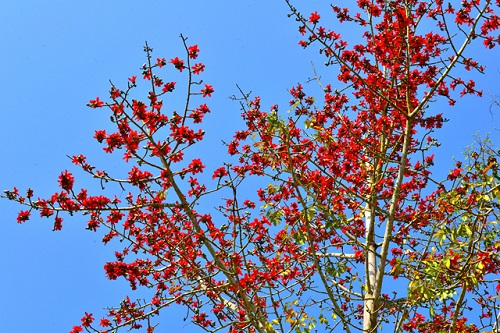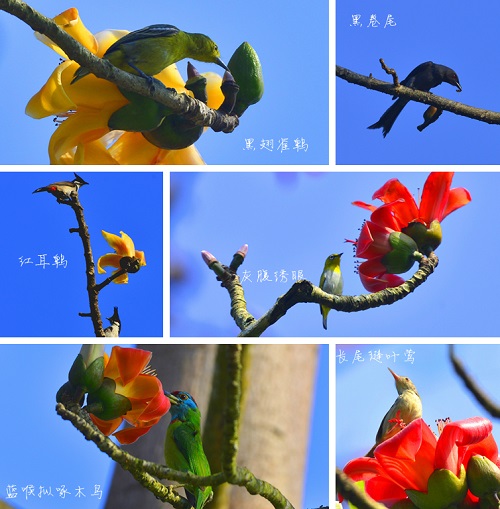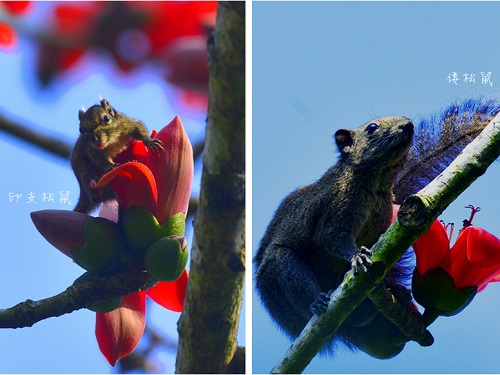The kapok tree, Ceiba pentandra, is a large, deciduous, tropical tree that is native to tropical America, Africa, and the East Indies. It is known to Chinese people as "Cotton Tree" (Mumian). People in Xishuangbanna have long grown Kapok trees, using its cotton to make clothes and its flowers as medicine.
The fast-growin tree is generally from 14-30 m tall. Its night-blooming floweres are borne in clusters. In the nooks and grooves of this huge plant live a diverse number of species including frogs, birds and bromeliads. The kapok tree is deciduous, shedding all of its leaves during the dry season. As its seeds are easily blown into open areas, kapok trees are some of the first to colonize open areas in the forest. As the flying mammals move from flower to flower feasting on the nectar, they transfer pollen on their fur, thus facilitating pollination.
In the Flower Garden of XTBG, tens of tall kapok trees are conserved. They fully bloom in February and March each year, attracting not only people but also animals as birds, bats, and squirrels, butterflies, bees,etc. Come and enjoy them in early Spring.

Clusters of papok flower

Flower Garden embroidered with kapok trees

Kapok tree in full bloom

Birds and kapok flower

Squirrels and kapok flower

Bees and kapok flower






